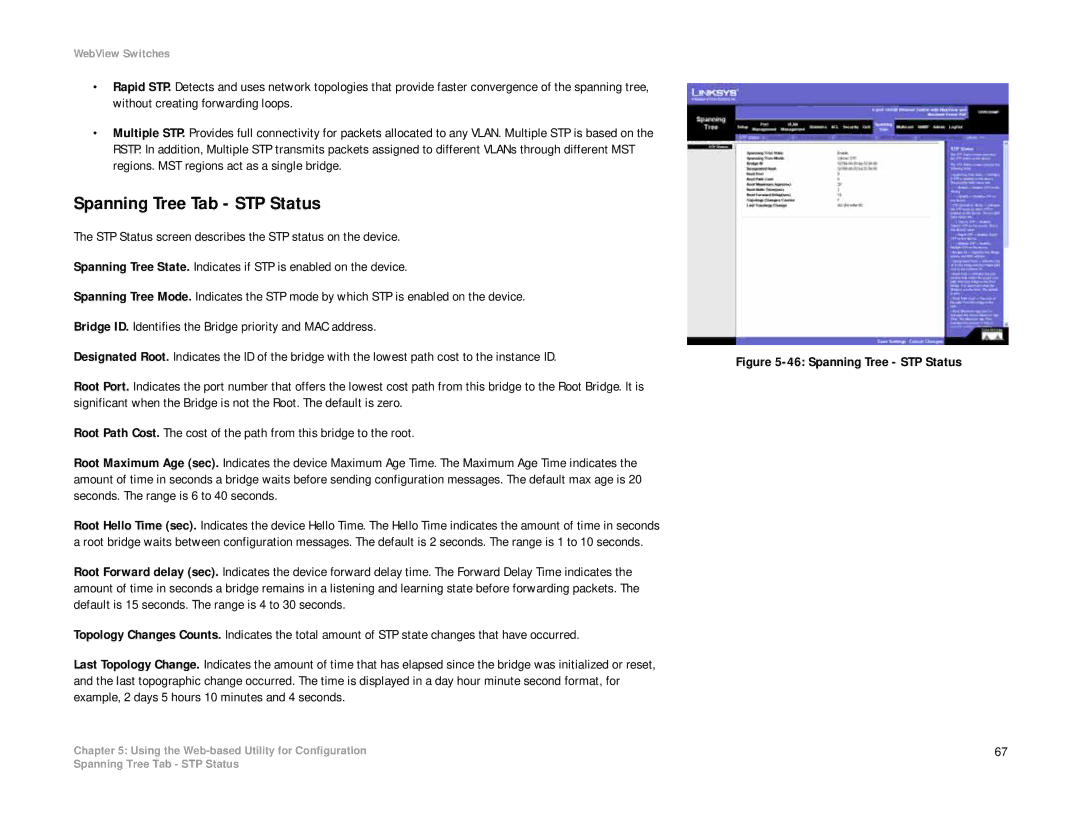
WebView Switches
•Rapid STP. Detects and uses network topologies that provide faster convergence of the spanning tree, without creating forwarding loops.
•Multiple STP. Provides full connectivity for packets allocated to any VLAN. Multiple STP is based on the RSTP. In addition, Multiple STP transmits packets assigned to different VLANs through different MST regions. MST regions act as a single bridge.
Spanning Tree Tab - STP Status
The STP Status screen describes the STP status on the device.
Spanning Tree State. Indicates if STP is enabled on the device.
Spanning Tree Mode. Indicates the STP mode by which STP is enabled on the device.
Bridge ID. Identifies the Bridge priority and MAC address.
Designated Root. Indicates the ID of the bridge with the lowest path cost to the instance ID.
Root Port. Indicates the port number that offers the lowest cost path from this bridge to the Root Bridge. It is significant when the Bridge is not the Root. The default is zero.
Root Path Cost. The cost of the path from this bridge to the root.
Root Maximum Age (sec). Indicates the device Maximum Age Time. The Maximum Age Time indicates the amount of time in seconds a bridge waits before sending configuration messages. The default max age is 20 seconds. The range is 6 to 40 seconds.
Root Hello Time (sec). Indicates the device Hello Time. The Hello Time indicates the amount of time in seconds a root bridge waits between configuration messages. The default is 2 seconds. The range is 1 to 10 seconds.
Root Forward delay (sec). Indicates the device forward delay time. The Forward Delay Time indicates the amount of time in seconds a bridge remains in a listening and learning state before forwarding packets. The default is 15 seconds. The range is 4 to 30 seconds.
Topology Changes Counts. Indicates the total amount of STP state changes that have occurred.
Last Topology Change. Indicates the amount of time that has elapsed since the bridge was initialized or reset, and the last topographic change occurred. The time is displayed in a day hour minute second format, for example, 2 days 5 hours 10 minutes and 4 seconds.
Chapter 5: Using the
Figure 5-46: Spanning Tree - STP Status
67
Spanning Tree Tab - STP Status
